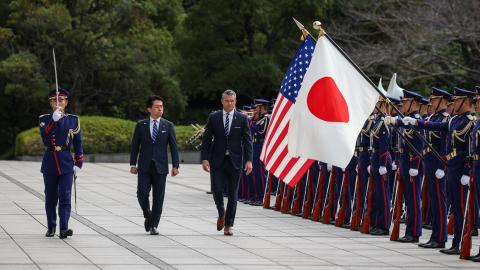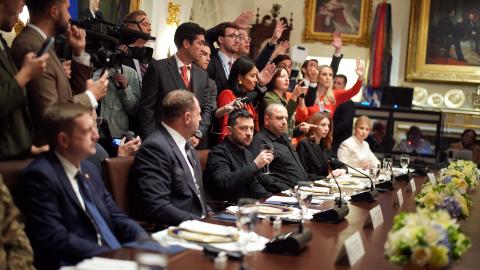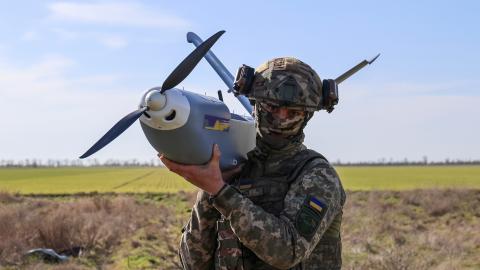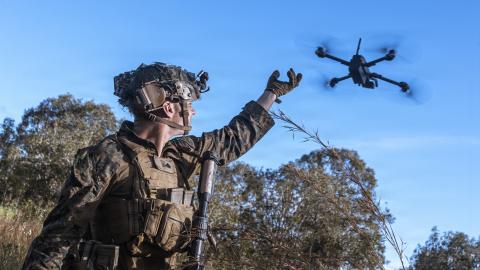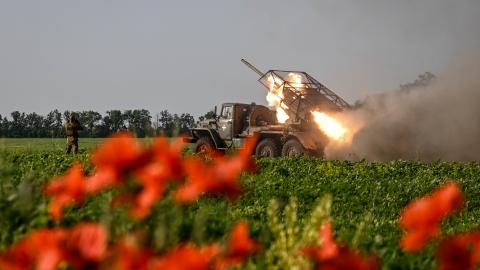Executive Summary
- North Korea’s growing role: Russia appears to be transferring Iranian Shahed drone technology and manufacturing infrastructure to North Korea.
- Battlefield assessment: The Russian military remained on an offensive footing, seeking to envelop the Ukrainian city of Pokrovsk.
- Russia shifts focus to a new front: Fighting erupted in Ukraine’s Dnipropetrovsk Oblast, which may soon become a new focus of combat operations.
- Russian summer offensive: Russia has so far failed to secure significant territorial gains in its summer offensive. But Moscow’s willingness to accept casualties suggests no end is in sight.
1. Russia May Be Sharing Shahed Drone Technology and Infrastructure with North Korea
According to the Defense Intelligence of Ukraine, Russia has been transferring Iranian loitering munitions technology and large-scale manufacturing infrastructure to its close ally, North Korea. If true, this development could have significant military ramifications for South Korea, a United States treaty ally.
Since Russia’s full-scale invasion of Ukraine, Pyongyang has intensified its strategic interest in drone warfare systems, particularly autonomous and artificial intelligence–augmented platforms. In May 2025 North Korean special forces used drones in drills that dictator Kim Jong Un personally inspected. Shahed drones’ inclusion in a North Korean rocket and missile salvo would significantly complicate South Korea’s efforts to defend itself. Worse, thanks to the rapid evolution of the Shahed baseline, the newest drones are equipped with 200-pound warheads—double the firepower of the original system.
North Korea and Iran have a long history of cooperation in critical arms design and manufacturing, including in the production of ballistic missiles capable of delivering nuclear weapons. More recently, the Islamic Republic’s strike packages launched at Israel have featured North Korean technology. Pyongyang also assisted Syria’s Assad dictatorship in the production of advanced missiles, chemical weapons, and allegedly even biological weapons.
Shahed factories in North Korea would benefit the Russian military as well as the North Korean dictatorship. While the Kremlin can produce 170 Shahed drones per day, it aims to increase this number to 190 by the end of the year. North Korean production could further bolster this number. Open-source satellite imagery suggests that Moscow is expanding its original Shahed plant in Alabuga in the Russian Republic of Tatarstan and constructing new factories across the country. These factories often rely on forced labor from indigenous Tatars and African immigrants, many of whom are underage. In light of Ukraine’s recent long-range drone attacks on the Alabuga plant, the Kremlin sees it as imperative to diversify its production pipeline.
Ukrainian defense intelligence estimates that Russia will soon be able to launch 500 Shahed drones per day at Ukraine. Worse, the Russian military has been establishing new launch positions, further stressing Kyiv’s air defenses, which may be nearing a breaking point. In May 2025 Russia attacked Ukrainian population centers with a total of 4,000 Shahed drones. While Ukraine intercepted around 80 percent of these munitions, the strike packages’ massive volume allowed them to cause significant damage.
2. Battlefield Assessment
As the Russian offensive pressed on, several areas in Ukraine witnessed heavy clashes, from Vovchansk in the Kharkiv sector in the north to the Orikhiv front in the south. Fighting also raged in Toretsk, Pokrovsk, and in the directions of Lyman, Kupiansk, Siversk, and Kramatorsk.
The Pokrovsk front, which is key to the defense of the eastern sector, is facing a dangerous envelopment effort as Russian combat formations seek to broaden the front lines from multiple directions. In the Sumy region of Ukraine, Russian offensive actioncontinued following the collapse of the Ukrainian effort in the Russian region of Kursk. Most notably, Russian sources now report that combat operations are occurring in the Dnipropetrovsk region of Ukraine, a worrying development for Kyiv if true.
As in previous weeks, both sides continued to use drones equipped with fiber-optic cables. The Russian Aerospace Forces remained active, hitting Ukrainian population centers with mixed strike packages of drones and ballistic and cruise missiles. Ukraine retaliated by hitting strategic targets deep inside Russia. This week Ukrainian drone units struck a critical Russian oil facility that provides fuel to the nearby Engels air base, a bastion for Russia’s heavy bomber fleet.
Thus far Russia has failed to secure significant territorial gains in its summer offensive. Nonetheless, its warfighting stamina and ability to sustain high casualty rates persist: the Russian military is on pace to reach one million total casualties in the war within the coming months. This tolerance for casualties has significant implications for efforts to end the conflict, especially if the US cuts military assistance to Ukraine. Moreover, declassified intelligence reports suggest that in 2025, the Russian high command has managed to lower the average number of casualties it receives per month, offering some relief to the Kremlin’s war machine.
